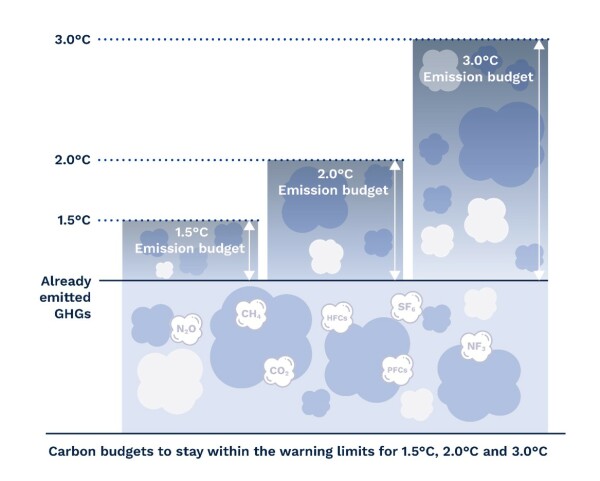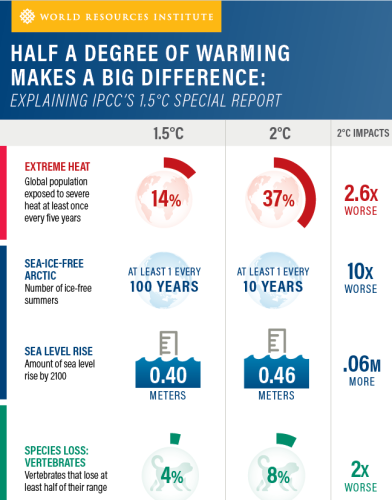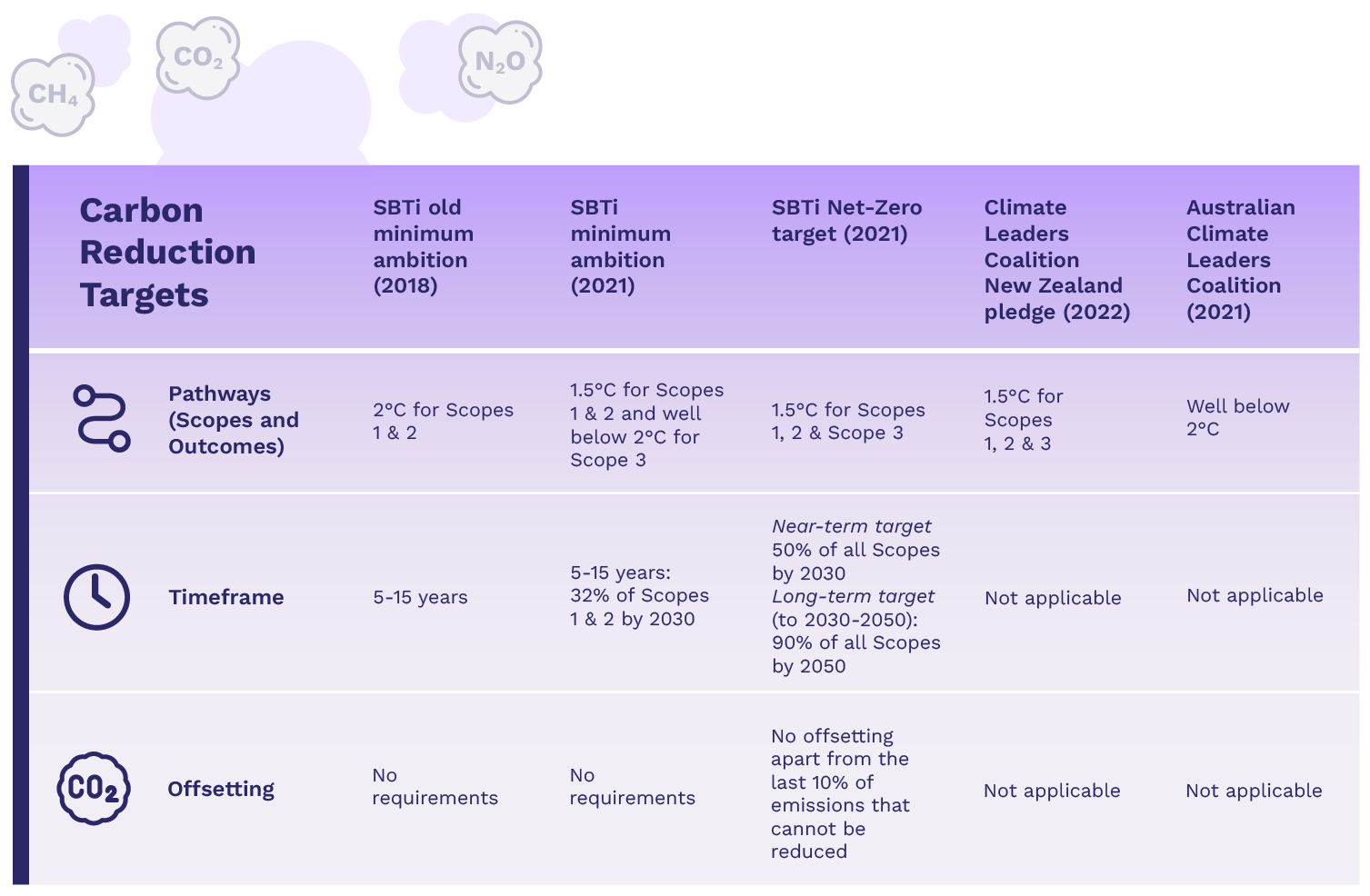There are many reasons for your organisation to set a carbon reduction target. You do it because your customers, investors or other stakeholders expect it. Or to reduce costs in the long term and drive innovation. It could be because you want to future-proof your organisation and prepare for potential upcoming regulations and related costs. Maybe you want to add brand value. Or it’s because it’s the right thing to do. But what makes a target science-based?
What are carbon reduction targets good for?
Science tells us that if humans want to have a shot at limiting global warming to 1.5°C above pre-industrial levels and avert the worst effects of climate change, we must halve our global greenhouse gas (GHG) emissions by 2030 and be carbon neutral by 2050. Of course, not every business, organisation or country emits GHGs in the same way, but if everyone does their fair share, we have a better chance of staying within the warming limits.
Click on image to enlarge
What are science-based targets?
Your company may set a target to reduce emissions by a certain percentage (say, 30% of your direct Scope 1 and indirect Scope 2 emissions by 2030) and that’s a great start. But if you want to call your target ‘science-based’, then it must be in line with what the latest climate science says is needed to limit global warming to 2°C above pre-industrial levels (or, even better, 1.5°C).
Your organisation can refer to having ‘science-based targets’ only if they have been validated by the Science Based Targets initiative (SBTi). The SBTi is a partnership between CDP, a global not-for-profit organisation that enables organisations to disclose their environmental impacts, World Resources Institute (WRI), the World Wide Fund for Nature (WWF), and the United Nations Global Compact (UN Global Compact).
A science-based target shows organisations how much and how fast they must reduce their emissions to do their fair share.
So far more than 100 organisations in Australia and New Zealand have committed to setting a science-based target (SBT). Committing is the first step to setting an SBT. Once you’ve committed, you have 24 months to develop a detailed emission reduction target in line with SBTi’s criteria. You then submit your target for official validation. If all goes well, you can inform your stakeholders, and start reporting your company-wide emissions and progress against your targets annually.
Are all science-based targets the same?
No. Our knowledge about how greenhouse gas emissions affect the climate is constantly evolving. The Intergovernmental Panel on Climate Change’s Sixth Assessment Report (2021) showed that climate change is widespread, rapid and intensifying. This makes it even more urgent to act. While setting a near-term target (five to 15 years) to stay well below 2°C was an ambition that seemed in line with the Paris agreement in 2018, we now know that’s not enough.
The SBTi now urges businesses to aim for the highest level of ambition (1.5°C). It also wants them to commit to setting a long-term target that will result in net-zero emissions in their value chains by 2050. Value chain emissions (also called Scope 3 emissions) come for example from materials, goods and services you source from suppliers, what happens to goods and services after they’ve been sold as well as investments and employees’ travels.
What is a net-zero target?
Until the SBTi released its Net-Zero Standard in 2021, the net-zero concept wasn’t well defined. This led to diverse and confusing approaches. Companies often used net-zero and carbon-neutral interchangeably for anything that balanced putting greenhouse gases into the atmosphere and taking them out, no matter if they had achieved this through offsetting or reducing emissions.
The table below shows how ambitions have changed over time. It also shows the targets that signatories in the Climate Leaders Coalitions in New Zealand and Australia must meet.
Click on image to enlarge
What happens when my business grows?
For many organisations, growth is coupled with increased emissions. If, for example, your production grows, so might your emissions from your vehicle fleet and from people using your products and services.
An SBT defines the amount by which a business needs to reduce its GHG emissions compared to a base year and includes expected growth. Some sectors have guidance and requirements specific to their sector and will use the Sectoral Decarbonization Approach (SDA). Most businesses will use Absolute Contraction Approach (ACA) which calls for an emission reduction of 4.2% year on year.
If you’re using the ACA, once you’ve set an SBT, reductions are set. They can only be altered when a company goes through significant changes or there have been mistakes. So, while your emissions might change with fluctuating markets, the carbon budgets you need to stay within do not. If your emissions grow, so must your efforts to decarbonise your business.

Why is an ambitious science-based target good for business?
Reducing emissions as part of your business strategy can give you an edge over competitors. And just as importantly, by working with your supply chain to reduce emissions, you will identify opportunities to collaborate with your suppliers and transform your (and their) business. These partnerships will help us all move towards a more sustainable future.
Published April 2023

